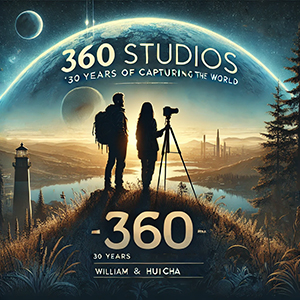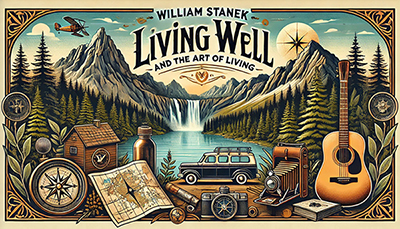
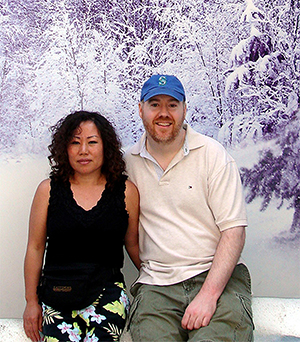 Photography Tips for Everyday Moments
Photography Tips for Everyday Moments
The most extraordinary beauty is often found in ordinary moments. In this series, William Stanek helps you see the world through a new lens, transforming everyday experiences into stunning photographic memories.

Transform your life with practical wisdom. Discover William Stanek's 'Living Well' series—your guide to a balanced and fulfilling life.
Discover William Stanek's Exclusive Art Collection
Explore and purchase the stunning art featured on this site. Own a piece of William Stanek's unique and captivating artwork today!
(May 9, 2025) Finding Beauty in the Details: The Art of Close-Up Photography
In the hustle and bustle of everyday life, it's easy to overlook the small details that surround us. But these details—whether they’re the intricate pattern of a leaf, the texture of an old brick wall, or the play of light on a raindrop—can reveal a world of beauty that's often hidden in plain sight. Close-up photography, or macro photography, allows us to explore these details, capturing the extraordinary in the ordinary. Here, we’ll delve into the art of close-up photography, sharing techniques for focusing on the small things that make life beautiful.
Introduction: Seeing the World Up Close
My fascination with close-up photography began during my travels in Europe. I was often captivated by the small, seemingly insignificant details of the places I visited—whether it was the texture of ancient stone walls in Rome or the delicate carvings on a wooden door in Prague. These details told stories of time, craftsmanship, and culture, and I found that by focusing on them, I could capture the essence of a place in a way that broad, sweeping landscapes couldn’t.
Close-up photography teaches us to slow down, to pay attention to the little things that make up the fabric of our lives. It’s an exercise in mindfulness, a way to find beauty in the ordinary and to appreciate the world on a smaller, more intimate scale.
Macro Techniques: Getting Up Close and Personal
Close-up photography often requires specialized techniques to capture details at a very short distance. While macro lenses are designed specifically for this purpose, there are also ways to achieve stunning close-ups with standard lenses or even smartphones.
Using a Macro Lens: A macro lens allows you to focus extremely close to your subject, capturing details that are often invisible to the naked eye. These lenses are ideal for photographing small subjects like flowers, insects, or intricate textures. When using a macro lens, pay attention to the depth of field—at such close distances, it’s often very shallow, so focus carefully on the most important part of your subject.
Using Extension Tubes: If you don’t have a macro lens, extension tubes are an affordable alternative. These tubes fit between your camera body and lens, allowing you to focus closer than your lens would normally allow. This setup can turn a standard lens into a macro lens, making it a versatile option for close-up photography.
Close-Up Filters: Another option for achieving macro shots without a dedicated macro lens is to use close-up filters, which screw onto the front of your lens like a regular filter. These filters magnify your subject, allowing you to get closer and capture more detail.
Smartphone Macro Photography: Many smartphones now offer macro modes or lenses, making close-up photography more accessible than ever. To get the best results, hold your phone steady and use a small tripod or stabilizer if possible. Tap to focus on your subject, and experiment with different angles to find the most compelling composition.
Pro Tip: When shooting close-ups, use manual focus if possible. Autofocus can struggle with such small subjects and shallow depth of field, so manual focus gives you more control over where the sharpest point in your image will be.
Exercise: Choose a small object—a flower, a piece of jewelry, or even a leaf—and photograph it using a macro lens, extension tubes, or close-up filters. Experiment with different angles and focus points to see how they change the image. If you’re using a smartphone, try the macro mode or attach a macro lens to get closer to your subject.
Focus and Depth of Field: Sharpening Your Vision
In close-up photography, focus and depth of field are critical elements that can make or break your image. Because you’re working at such close distances, even a slight movement can throw your subject out of focus, and the depth of field is often razor-thin.
Selective Focus: One of the most powerful tools in close-up photography is selective focus, where you focus on a specific part of your subject while letting the rest of the image blur. This technique draws the viewer’s eye to the area of sharpest focus, creating a striking contrast between the sharp and blurred areas.
Controlling Depth of Field: The depth of field in close-up photography is typically very shallow, which means only a small part of the image will be in focus. To control this, use a smaller aperture (higher f-number) to increase the depth of field if you want more of the subject to be sharp. Conversely, use a larger aperture (lower f-number) to isolate a specific detail by creating a shallower depth of field.
Focus Stacking: When you want to achieve a greater depth of field in close-up photography, consider using a technique called focus stacking. This involves taking multiple shots of the same subject at different focus points and then combining them in post-processing to create an image where more of the subject is in sharp focus.
Pro Tip: To avoid camera shake, which can be particularly noticeable in close-up photography, use a tripod and a remote shutter release or your camera’s self-timer. This helps ensure that your image is sharp and that your focus is exactly where you want it.
Exercise: Practice selective focus by photographing a small subject with a shallow depth of field. Focus on different parts of the subject—such as the tip of a leaf, the center of a flower, or the texture of a fabric—and see how changing the focus point alters the image. Experiment with different apertures to control the depth of field.
Lighting for Close-Ups: Illuminating the Details
Lighting is crucial in close-up photography, as it can dramatically affect the appearance of small details. Whether you’re using natural light, artificial light, or a combination of both, understanding how to light your subject will help you capture the most intricate details.
Natural Light: Natural light is often the best option for close-up photography, especially when shooting outdoors. Soft, diffused light—such as the light you get on an overcast day or in the shade—helps to evenly illuminate your subject without harsh shadows. If you’re shooting indoors, position your subject near a window to take advantage of the natural light.
Reflectors: When shooting close-ups, a small reflector can be invaluable for bouncing light into shadowed areas, revealing more detail. You can use a dedicated photography reflector or simply a piece of white paper or card. Position the reflector opposite the light source to fill in the shadows and create a more balanced image.
Artificial Light: If you’re shooting indoors or in low light, consider using a small LED light or a ring light to illuminate your subject. These lights provide consistent, controllable illumination and can be positioned close to your subject to highlight specific details. Just be careful not to create harsh shadows or overexpose the image.
Pro Tip: When using artificial light, consider adding a diffuser to soften the light and reduce glare. A simple way to do this is by placing a piece of white fabric or paper between the light source and your subject.
Exercise: Photograph a small subject using different types of lighting—natural light, artificial light, and a combination of both. Experiment with reflectors and diffusers to see how they affect the appearance of your subject. Pay attention to how the light reveals or obscures details and textures.
Everyday Subjects: Finding Interest in the Commonplace
One of the joys of close-up photography is discovering beauty in the most unexpected places. You don’t need exotic locations or special subjects to create compelling images—often, the most interesting details are right in front of you, hidden in the everyday objects and scenes that surround you.
Household Objects: Everyday items like kitchen utensils, fabric textures, or even the surface of a well-worn book can become fascinating subjects when viewed up close. Look for patterns, textures, and colors that might go unnoticed at a normal distance but take on new significance when magnified.
Nature’s Details: The natural world is full of intricate details just waiting to be captured. Leaves, flowers, tree bark, and even the veins of an insect’s wing can reveal stunning complexity when viewed through a macro lens. Get down to the level of your subject, and take the time to explore the miniature world that often goes unnoticed.
Textures and Patterns: Textures and patterns are especially compelling in close-up photography. The roughness of a stone, the weave of a fabric, or the repeating pattern of a tile can create abstract images that are visually interesting and engaging. Look for strong lines, shapes, and contrasts that can turn an ordinary texture into a work of art.
Pro Tip: Don’t overlook the potential of shooting in black and white. Close-up photography is often about texture and form, and black and white can help emphasize these elements by stripping away the distraction of color.
Exercise: Choose an everyday object—something as simple as a spoon, a piece of fabric, or a houseplant—and photograph it from up close. Focus on the textures, patterns, and details that make the object unique. Experiment with both color and black-and-white photography to see how the absence of color changes the focus of the image.
Post-Processing for Close-Ups: Enhancing the Details
Post-processing is an important step in close-up photography, as it allows you to enhance the details and bring out the best in your images. While it’s essential to get the shot right in-camera, editing can help you fine-tune the image and emphasize the details that make it special.
Sharpening: Close-up images often benefit from a bit of extra sharpening to bring out the fine details. Use the sharpening tools in your editing software to enhance the edges and textures in your image, but be careful not to overdo it—too much sharpening can create an unnatural, grainy appearance.
Contrast and Clarity: Adjusting the contrast and clarity can help emphasize textures and details in your close-up images. Increasing contrast can make patterns and lines stand out, while boosting clarity enhances the midtones and gives the image a crisper appearance. Again, moderation is key—small adjustments usually yield the best results.
Color Adjustments: If you’re working in color, subtle adjustments to the saturation and vibrancy can make the details in your image pop. Pay attention to how color affects the mood and focus of your image. In some cases, reducing saturation can help draw attention to the textures and forms without the distraction of bold colors.
Pro Tip: When editing close-up photos, zoom in to 100% or more to carefully check the details. This allows you to see exactly how your adjustments are affecting the image and ensures that your final photo is sharp and clean.
Exercise: Edit one of your close-up photos using sharpening, contrast, clarity, and color adjustments. Focus on enhancing the details and bringing out the textures that make the image interesting. Compare the edited version with the original to see how your adjustments have changed the image.
Conclusion: The Art of Small Things
Close-up photography invites us to slow down, to see the world from a different perspective, and to appreciate the beauty in the small things that we often overlook. By focusing on the details, we can find extraordinary moments in the most ordinary places, transforming everyday objects and scenes into works of art.
As you continue to explore the world of close-up photography, remember that the beauty is in the details. Whether you’re photographing the delicate petals of a flower, the intricate texture of a fabric, or the simple elegance of a household object, take the time to look closely, experiment with your technique, and let your creativity guide you.
Share your close-up photographs with us on Instagram using #ArtOfSmallThings. We can’t wait to see how you capture the beauty in the details of your everyday world.
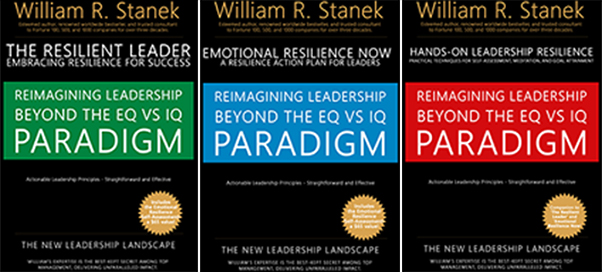
Join William at the crossroads of technology, business, and leadership, where true influence isn't about titles - it's about inspiring action, driving change, and guiding others with integrity. Discover how authentic leadership can transform not just careers, but entire industries.
Bring Inspiration Home
Enhance your space with William Stanek's evocative art. Each piece is crafted to inspire and uplift your everyday life.
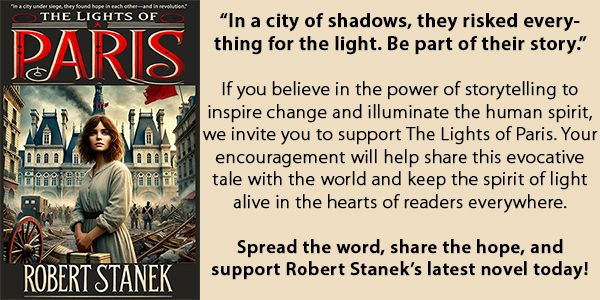
Support The Lights of Paris by Robert Stanek, William Stanek's pen name! Through vivid historical detail and deeply moving character stories, Robert takes readers on an unforgettable journey through one of history’s most transformative times.

